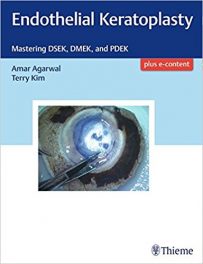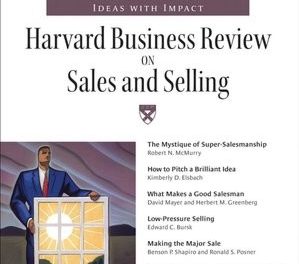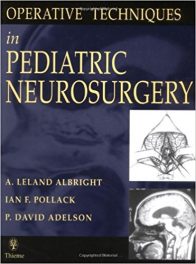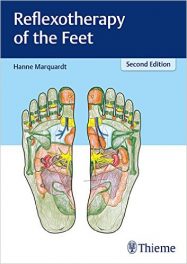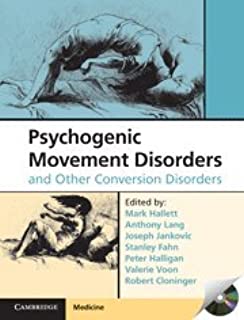 Editors: Mark Hallet, Anthony E. Lang, Joseph, Jankovic, Stanley Fahn, Peter W. Halligan, Valerie Voon, and C. Robert Cloninger
Editors: Mark Hallet, Anthony E. Lang, Joseph, Jankovic, Stanley Fahn, Peter W. Halligan, Valerie Voon, and C. Robert Cloninger
Publisher: Cambridge University Press – 324 pages
Book Review by: Nano Khilnani
Psychogenic movement disorders and other conversion disorders are some of the most mis-diagnosed conditions in psychiatry. Correct diagnosis of the exact nature and features of this ailment is one of the most difficult of tasks, so proper and effective treatment is very critical.
This book, with 80 specialist content contributors including seven highly qualified experts as editors, is an ideal tool for those who have patients with such disorders. Reading the detailed list of chapters below that discuss the various syndromes is an imperative first step to take, and acquiring this text as a must-have-and-keep reference is the critical second step to take.
- Section I – Clinical Issues
- Introduction to the psychiatry of movement disorders
- Phenomenology of psychogenic movement disorders
- Psychogenic parkinsonism
- Epidemiology and clinical impact of psychogenic movement disorders
- The Scottish Neurological Symptoms Study: diagnoses, characteristics, and prognosis in 1144 new neurology outpatients with symptoms unexplained by disease
- Predisposition and issues of mixed etiology in psychogenic movement disorders
- Psychogenic movement disorders in children
- Childhood disorders: another perspective
- Clinical features and treatment outcome of conversion disorders in children and adolescents
- Somatoform disorders and psychogenic movement disorders
- Psychogenic non-epileptic seizures
- Hypochonriasis and its relationship to somatization
- Movement disorders in complex regional pain syndrome: the pain field perspective
- Psychogenic dystonia in psychogenic complex regional pain syndrome
- Latah and related syndromes
- Trauma and dissociation: clinical manifestations, diagnosis, epidemiology, pathogenesis, and treatment
- Psychogenic movement disorders: illness in search of disease?
- Possible genetic approaches to conversion
- Section II – Physiology
- Functional brain imaging of psychogenic paralysis during conversion and hypnosis
- Action control in conversion paralysis: evidence from motor imagery
- Imaging in psychogenic movement disorders
- Imaging in hysterical, hypnotically suggested, and malingered limb paralysis
- Functional imaging of psychogenic and feigned weakness
- An MRI study of recall of causal events in conversion disorder: preliminary evidence of increased orbito-frontal and parietal activation
- Cortisol, trauma, threat vigilance in patients with psychogenic non-epileptic seizures
- Components of voluntary action
- Action selection in psychogenic movement disorders
- Insights from physiology: tremor and myoclonus
- Physiology of psychogenic dystonia
- Evoked potentials in the assessment of patients with suspected psychogenic sensory symptoms
- Characterizing and assessing the spectrum of volition in psychogenic movement disorders
- Section III – Assessment
- Rating scales for psychogenic movement disorders
- Quality of life in psychogenic movement disorders: the cause, not the effect
- Psychiatric testing
- Diagnostic considerations for the assessment of malingering within the context of psychogenic movement disorders
- Section IV – Treatment
- Prognosis in patients with psychogenic movement disorders
- Psychogenic movement disorders: explaining the diagnosis
- Patterns of practice: report of the Movement Disorder Society questionnaire
- Psychotherapy for psychogenic movement disorders
- Pharmacotherapy
- Suggestion
- Treating psychogenic movement disorders with suggestion
- Inpatient therapy: trying to transcend pathological dissociation, dependence, and disability
Appendix: Psychogenic movement disorders video legends
Editors:
Mark Hallet, MD is Chief of the Human Motor Control Section in the Medical Neurology Branch of the National Institute of Neurological Disorders and Stroke (NINDS) at the National Institutes of Health in Bethesda, Maryland.
Anthony E. Lang, MD, FRCPC is Professor and Director of the Division of Neurology and Jack Clark Chair for Parkinson’s disease research at the University of Toronto, and Director of the Movement Disorders Center at Toronto Western Hospital in Ontario, Canada.
Joseph, Jankovic, MD is Professor of Neurology, Distinguished Chair in Movement Disorders, Director of the Parkinson’s Disease Center and Movement Disorders Clinic at Baylor College of Medicine’s Department of Neurology in Houston, Texas.
Stanley Fahn, MD is H. Houston Merritt Professor of Neurology and Director of the Center for Parkinson’s Disease and Other Movement Disorders, at Columbia University in New York, New York.
Peter W. Halligan DSc, FBPS, FMedSci is Professor and Dean of Strategic Futures and Interdisciplinary Studies at the School of Psychology at Cardiff University in the United Kingdom.
Valerie Voon, MD is a Clinical Research Associate in the Behavioral and Clinical Neuroscience Institute in the Department of Psychiatry at the University of Cambridge in the United Kingdom.
Robert Cloninger, MD is Wallace Renard Professor of Psychiatry and Director of the Center for Psychobiology of Personality in the Department of Psychiatry at Washington University School of Medicine in St. Louis, Missouri.

